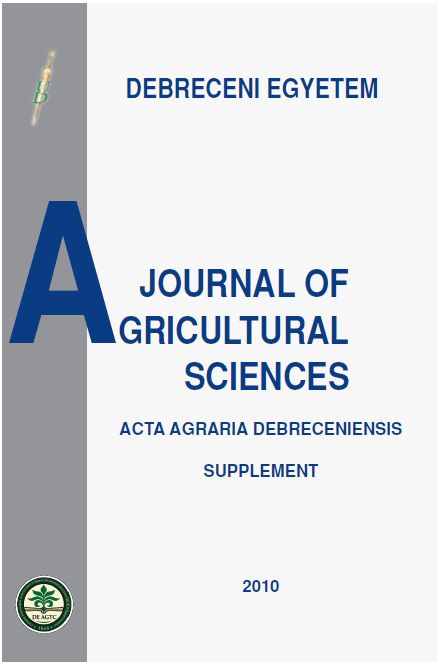Risk effects of the spread route of mycotoxins
Authors
View
Keywords
License

This work is licensed under a Creative Commons Attribution 4.0 International License.
How To Cite
Abstract
In Hungary the mycotoxin is a great problem, because there are many natural toxins in wheat and maize. These cereals can be found on
considerable proportion of the country’s sowing area, and they are deterministic food for the population. The direct human and animal
utilization of the contaminated cereals mean a serious risk in the food chain. In Hungary’s climate the soil is contaminated with pathogen
moulds, particularly Fusarium species, which increase by respective temperature and moisture content in cereals. The Fusarium can
decrease the quality of the wheat in different ways: decrease the germination capability and cause visible discoloration and appearance of
mould, reduces the dry material and nutrient content of the grain. From the toxins produced by the Fusarium genus, the trichotecene (T-2,
HT-2, deoxinivalenol, nivalenol, diacetoxyscxirpenol, Fusarenon-X) and the estrogenic zearalenon (F-2) are the most common in Hungary.
The fumonisins (FB1, FB2, FB3) first identified in 1988, relatively newly discovered, are also important. Major proportion of mycotoxins in a
healthy organization is metabolized by the enzyme system of liver and intestinal bacteria. The toxicity is reduced or even leaves off.
However, more toxic and biologically active compounds can be formed. For the reduction of mycotoxin-contamination several possibilities
are available in the case of storage, processing and feeding.

 https://doi.org/10.34101/ACTAAGRAR/I/8382
https://doi.org/10.34101/ACTAAGRAR/I/8382